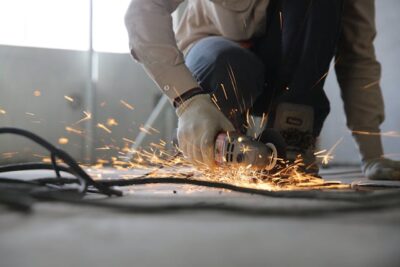Ever decided to build your dream home and realized within two weeks that you’ve entered a world of forms, permits, price shifts, and phone calls that start with “we’re a little behind”? In Alabama—where the pace can be relaxed but the paperwork never is—starting construction brings its own rhythm. It sounds exciting, and it is, but the early stage isn’t just about choosing tile and floor plans. In this blog, we will share what you really need to know before you break ground.
Get Grounded Before You Pick Up a Shovel
The idea of starting from scratch carries appeal: no repairs, no previous owner’s wallpaper, no weird decisions made in the ‘90s that you now have to undo. But before the foundation is poured, a different kind of groundwork matters. Planning isn’t just logistical—it’s psychological. You’re not just preparing for a build. You’re preparing for the long series of decisions, trade-offs, and moments of second-guessing that come with it.
It helps to know who’s on your side early. Local crews with deep community ties often bring more than skill—they bring consistency, accountability, and the kind of reputation that keeps them booked year-round. Companies like South Alabama Construction are often trusted not just for their technical work but for how they manage expectations, explain processes clearly, and stay connected from quote to completion. Homeowners working with firms like this benefit from direct answers instead of industry jargon and options grounded in long-term durability, not short-term fixes.
That relationship matters more than most people think. It’s not just about building a house. It’s about building with people who won’t disappear the second the last nail goes in.
Know That Timelines Are a Guideline, Not a Guarantee
Even before the pandemic, construction timelines had a reputation for being “flexible,” but the past few years redefined what that meant. Supply chains shifted. Labor availability became unpredictable. Costs fluctuated faster than anyone could predict. And while much of that has started to stabilize, the ripple effects are still real.
That doesn’t mean delays are inevitable—it means that having a rigid, unforgiving schedule is a setup for frustration. Weather matters. Permits can stall. Materials might arrive late or get substituted. If you approach your timeline with a bit of breathing room, you’ll navigate those bumps with fewer headaches.
It helps to ask the right questions at the start: What’s the lead time on the materials you’ve chosen? Is your contractor working on multiple builds at once? How is progress tracked and communicated? You want answers that reflect planning, not wishful thinking.
And don’t assume that faster is better. Speed can often come at the expense of quality. A crew rushing to stay on schedule might push through a detail that needs more care. A slightly longer build with fewer shortcuts often pays off in the long run, especially when it means fewer surprises after move-in.
Design for Function, Not Just Aesthetic
Pinterest boards and inspiration sites have made design more accessible, but they’ve also shifted focus. People get attached to visual ideas without thinking about how those ideas function in real life. Open shelving looks great until you realize you’re dusting five times a week. Tall windows feel modern, but not every layout makes sense with direct afternoon sun heating half the house.
When you’re planning a home, start with how you actually live. Do you cook daily or only on weekends? Do you need quiet spaces or open gathering areas? How much storage do you want—and how much are you actually going to use? These questions shape everything from floorplans to lighting.
That doesn’t mean sacrificing style. It means letting use guide design. The best homes aren’t the ones with the flashiest finishes. They’re the ones where you don’t have to fight the space to do everyday things. Layouts that let you flow naturally from room to room, spaces that can shift with your needs, and materials that hold up without constant maintenance end up serving you far longer than any trend does.
Build With the Climate, Not Against It
Where you build affects how you build. And in a time when extreme weather is no longer rare, thinking about location-specific durability is essential. Roofs that handle high wind, insulation that stands up to temperature shifts, drainage that works under pressure—these are decisions that can’t be generalized.
Construction codes give you the minimum. But going a step beyond often saves you future damage, insurance hassles, or repair costs. That could mean spending more up front on impact-resistant shingles or opting for reinforced windows even if they’re not required. It might also mean situating the home on the lot in a way that naturally protects it from water or wind rather than just dropping it wherever the plan fits.
Energy efficiency matters too, but not in the trendy, buzzword way. It matters in daily comfort, in monthly bills, and in how hard your systems have to work over time. Smart insulation, strategic ventilation, and regionally appropriate materials help the house work with the environment rather than fighting it every day.
Expect to Make Decisions You Didn’t Plan For
Even the most prepared homeowners hit a wall around month three. It’s usually around the time framing is up and finishes are being finalized. The number of decisions—not just big ones, but small, technical, exhausting ones—adds up fast.
Where does the outlet go in the pantry? Which trim do you want around the windows? Is the door swing right for the laundry room? These questions don’t show up on the early vision boards, but they have to be answered. If you wait until someone asks you onsite, you’ll either delay things or make a rushed call you regret later.
One solution is batching decisions early. Sit down with your builder or designer and walk through the timeline. Ask what selections need to be made in the next 30 to 60 days. Make them calmly, with room to think. Keep notes. Stay organized. A simple spreadsheet or project tracker can reduce the mental clutter by half.
And don’t be afraid to say you need a minute. Rushing into decisions to keep things moving is rarely worth it if it leads to backtracking. A one-day pause is better than a costly redo.












